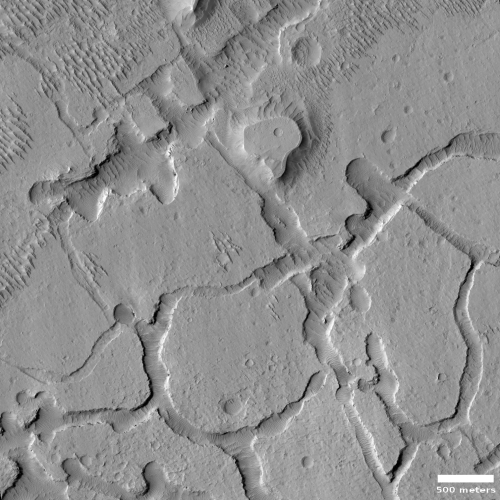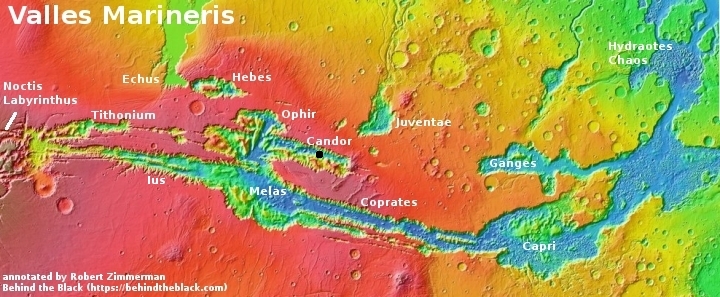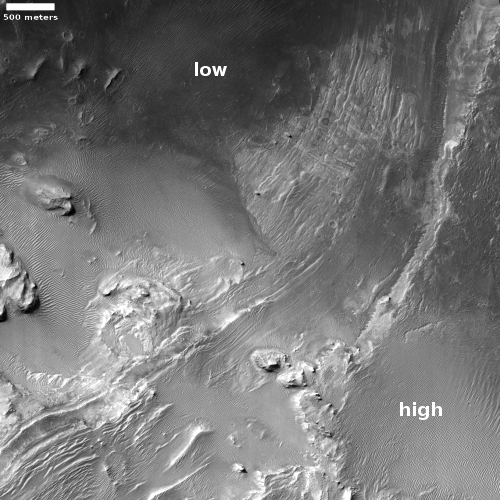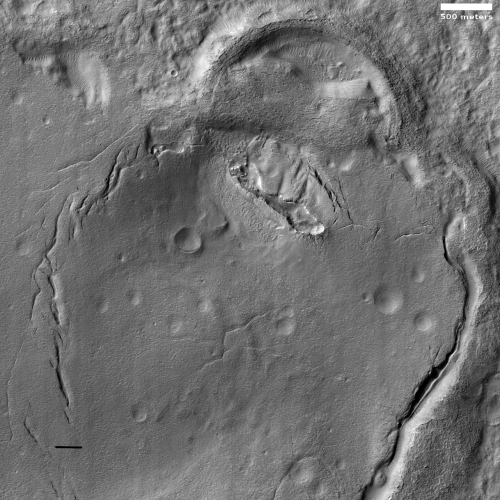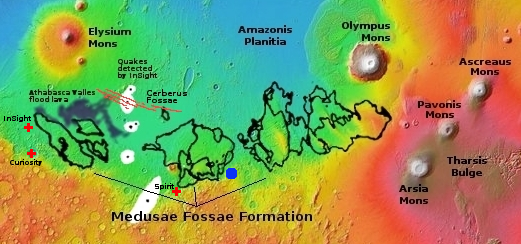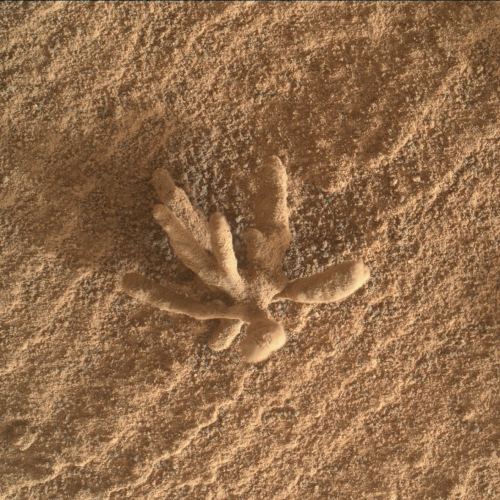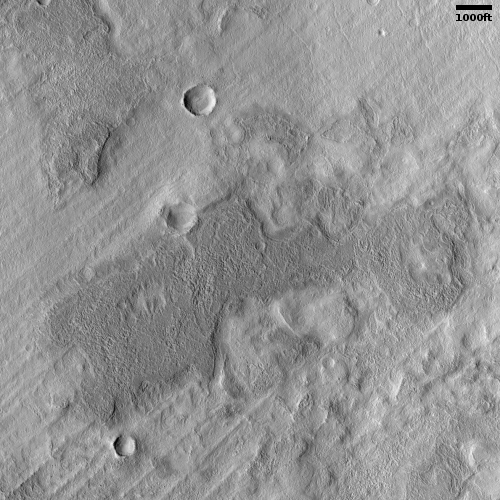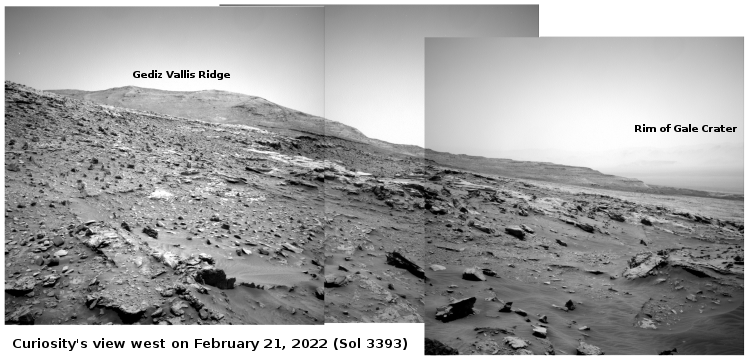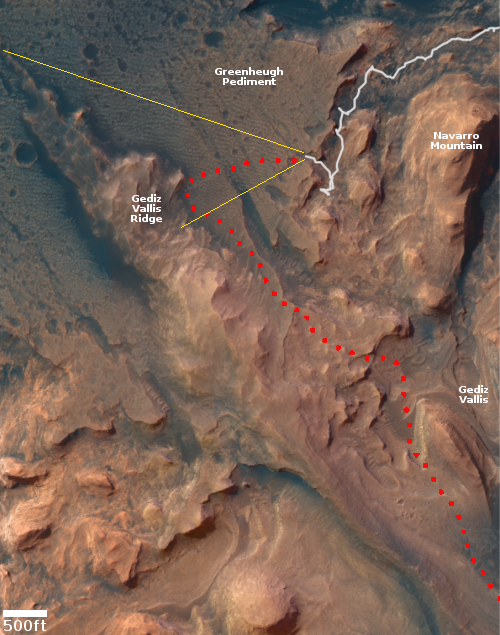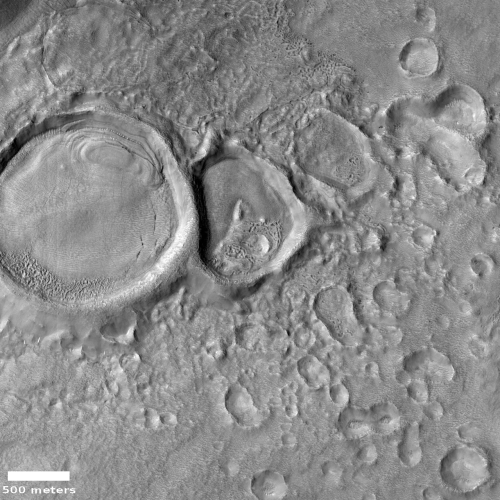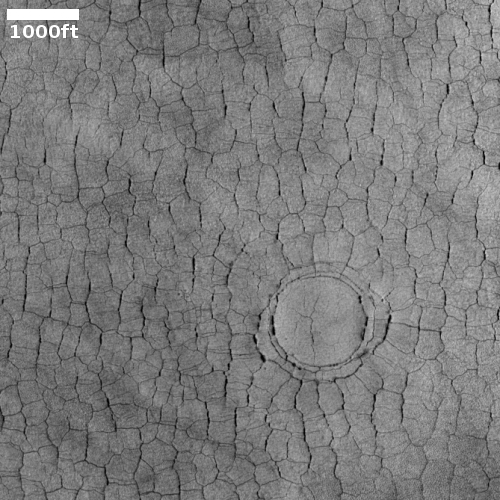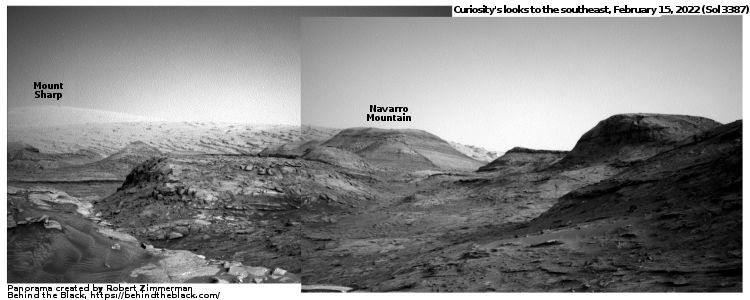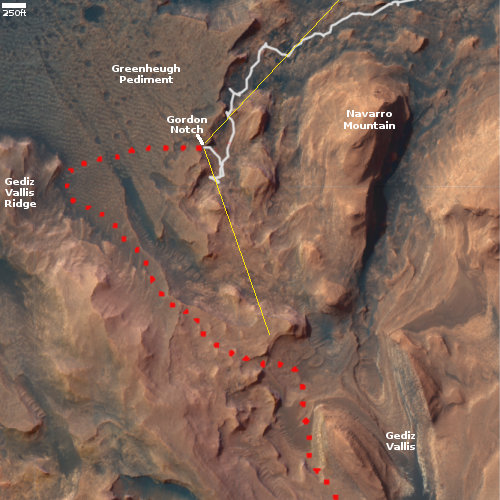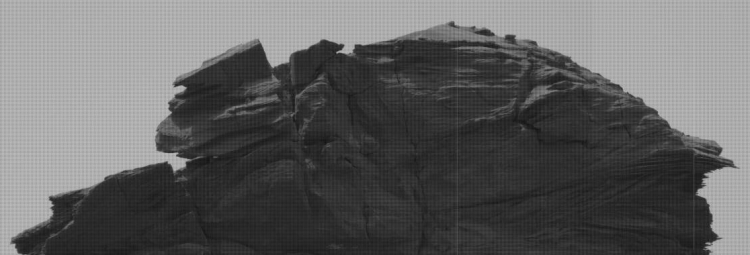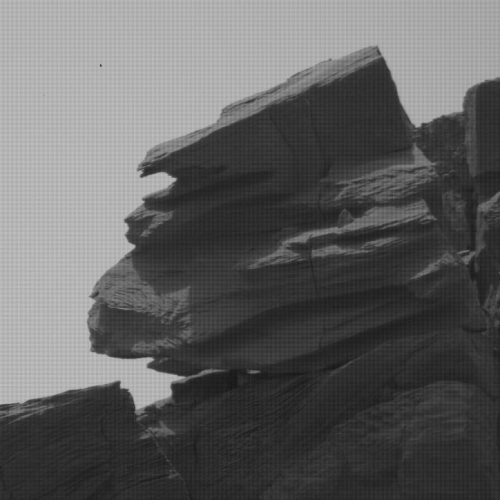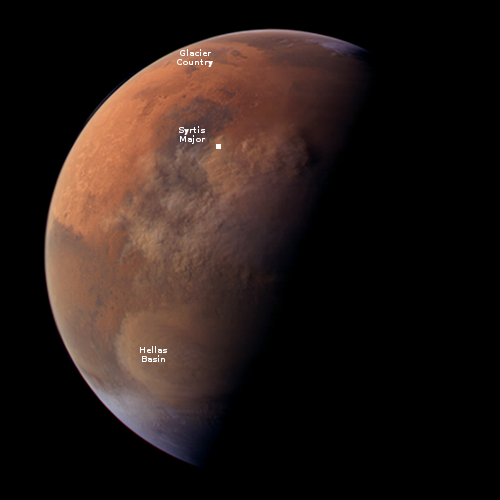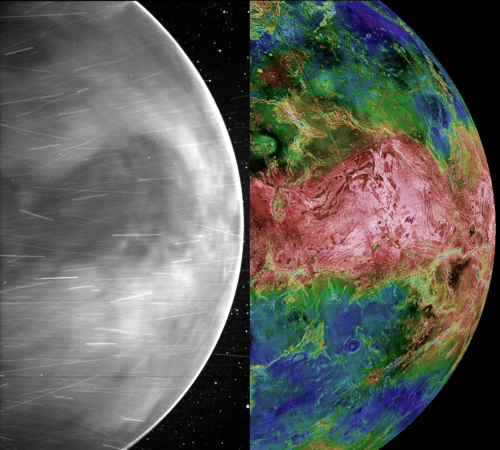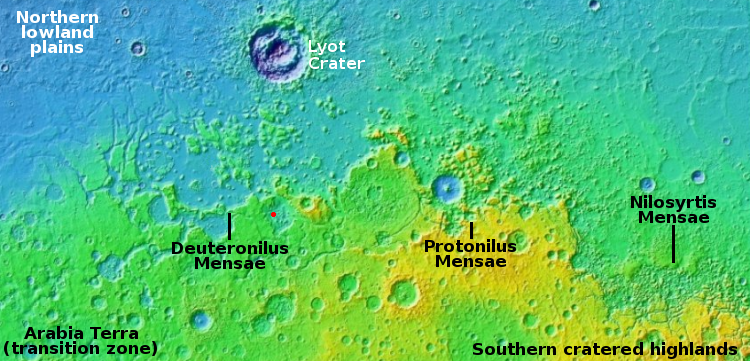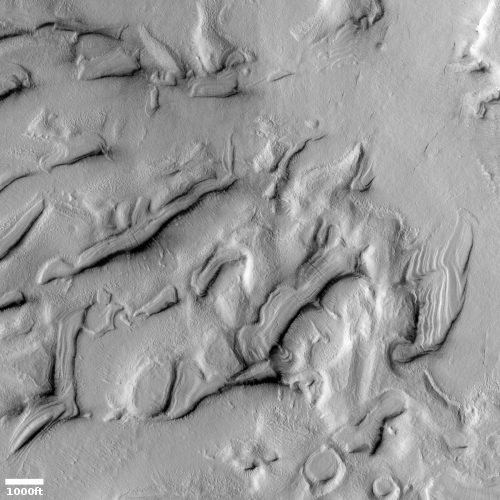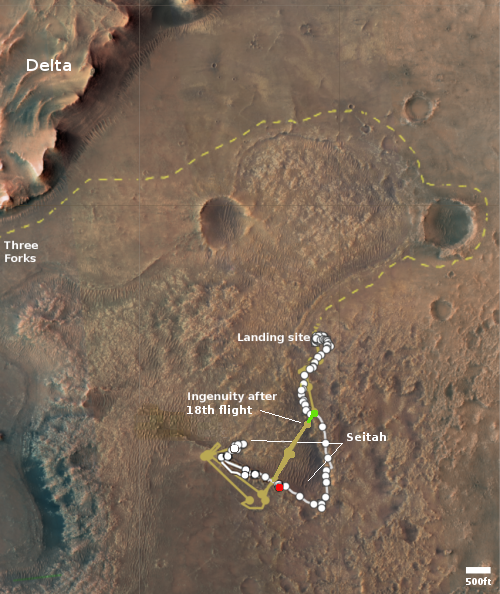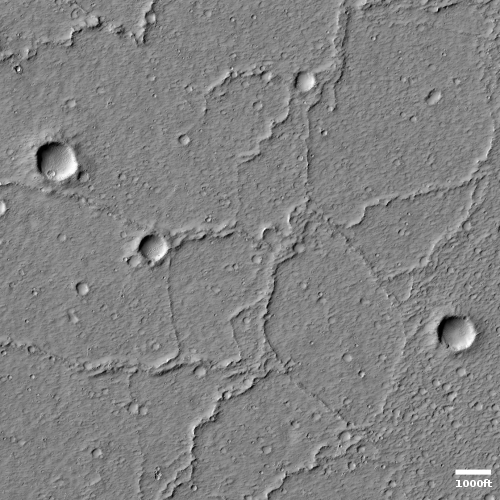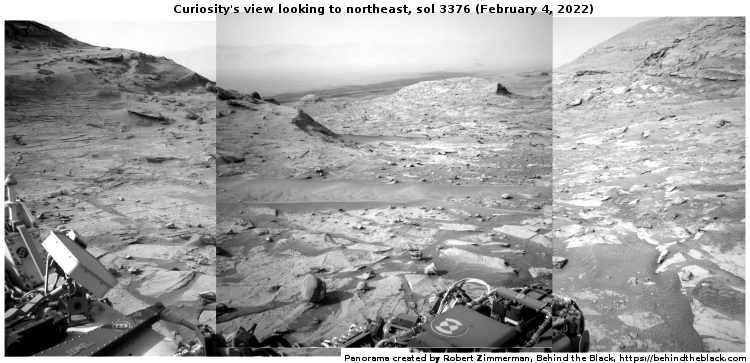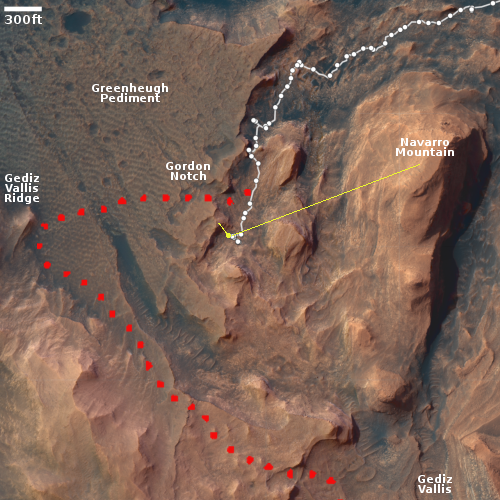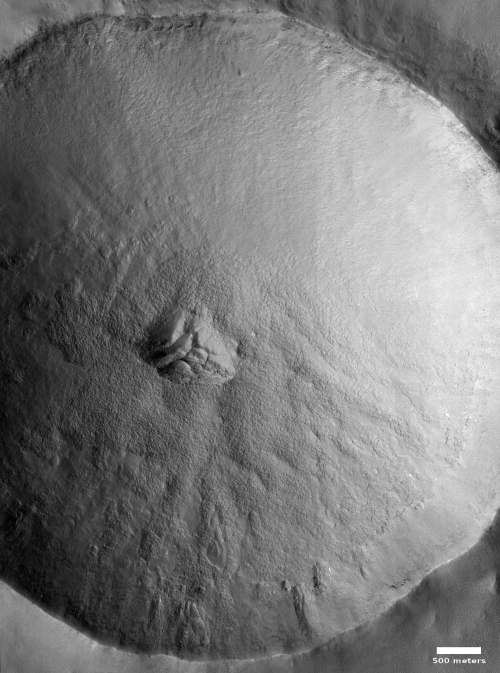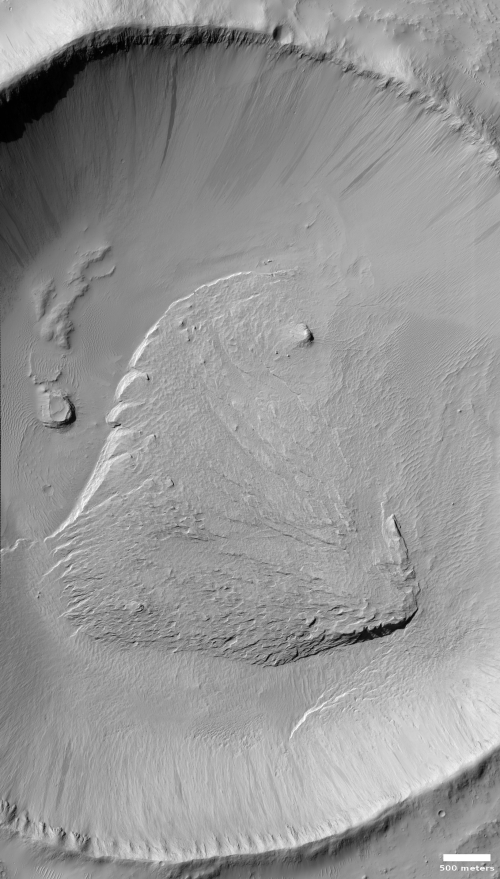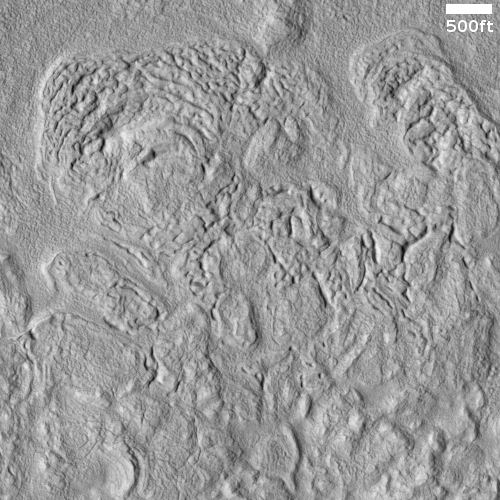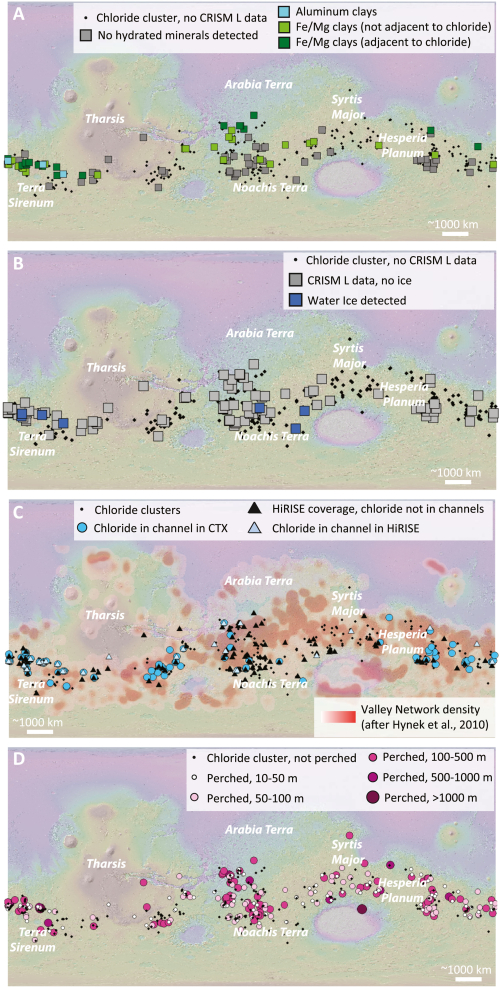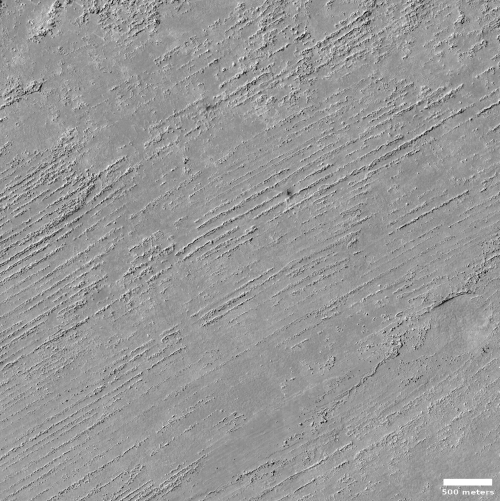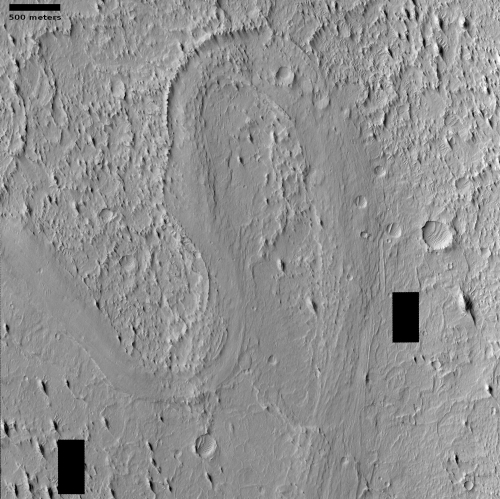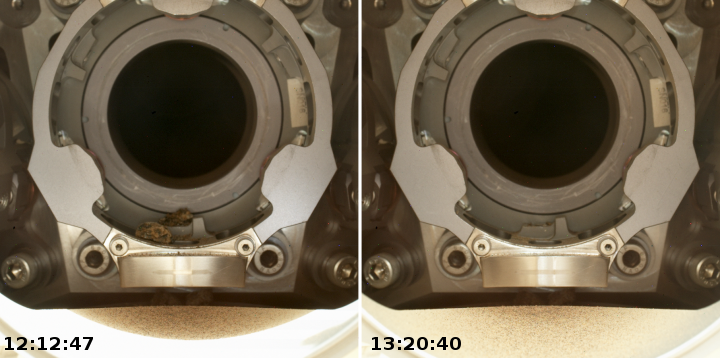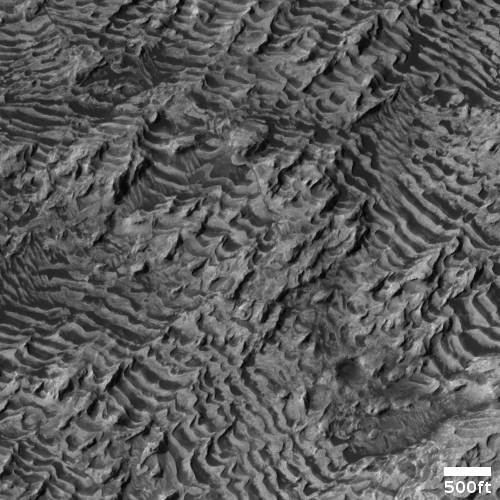Fractured terrain on Mars
Today’s cool image, which at first glance does not seem so puzzling, actually falls into my “What the heck?” category of baffling Martian geology. The picture to the right, cropped and reduced to post here, was taken on January 15, 2022 by the high resolution camera on Mars Reconnaissance Orbiter (MRO). Labeled “Avernus Cavi fractures”, it shows what resembles the well-documented chaos terrain seen in many places on Mars, where erosion over eons along fault lines creates mesas with random criss-crossing canyons.
The problem is that this location is practically on the Martian equator, and chaos terrain tends to be found in the mid-latitude bands where there are many glaciers, suggesting the cyclical waxing and waning of those glaciers is what causes the erosion. Here at the Martian equator the terrain is very dry. No glaciers.
Moreover, note the higher mesa near the top center. Its flat top suggests that once this terrain was covered with an even higher layer of material, almost all of which was stripped away evenly everywhere, except where that mesa sits. As an amateur geologist I can’t think of any sequence of events that would do such a thing. I suspect professionals might have problems themselves.
Then there are the small parallel ridges. They suggest dunes, especially inside the depressions where sand and dust can get trapped. On the mesa tops however these ridges are more mysterious. Why for example are they aligned with the small ridge in some hollows, but not others? They in many ways remind me of the ridges in this earlier “What the heck?” cool image, also right on the equator.
The overview map below provides some help, though not much.
» Read more
Today’s cool image, which at first glance does not seem so puzzling, actually falls into my “What the heck?” category of baffling Martian geology. The picture to the right, cropped and reduced to post here, was taken on January 15, 2022 by the high resolution camera on Mars Reconnaissance Orbiter (MRO). Labeled “Avernus Cavi fractures”, it shows what resembles the well-documented chaos terrain seen in many places on Mars, where erosion over eons along fault lines creates mesas with random criss-crossing canyons.
The problem is that this location is practically on the Martian equator, and chaos terrain tends to be found in the mid-latitude bands where there are many glaciers, suggesting the cyclical waxing and waning of those glaciers is what causes the erosion. Here at the Martian equator the terrain is very dry. No glaciers.
Moreover, note the higher mesa near the top center. Its flat top suggests that once this terrain was covered with an even higher layer of material, almost all of which was stripped away evenly everywhere, except where that mesa sits. As an amateur geologist I can’t think of any sequence of events that would do such a thing. I suspect professionals might have problems themselves.
Then there are the small parallel ridges. They suggest dunes, especially inside the depressions where sand and dust can get trapped. On the mesa tops however these ridges are more mysterious. Why for example are they aligned with the small ridge in some hollows, but not others? They in many ways remind me of the ridges in this earlier “What the heck?” cool image, also right on the equator.
The overview map below provides some help, though not much.
» Read more

